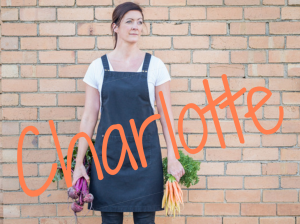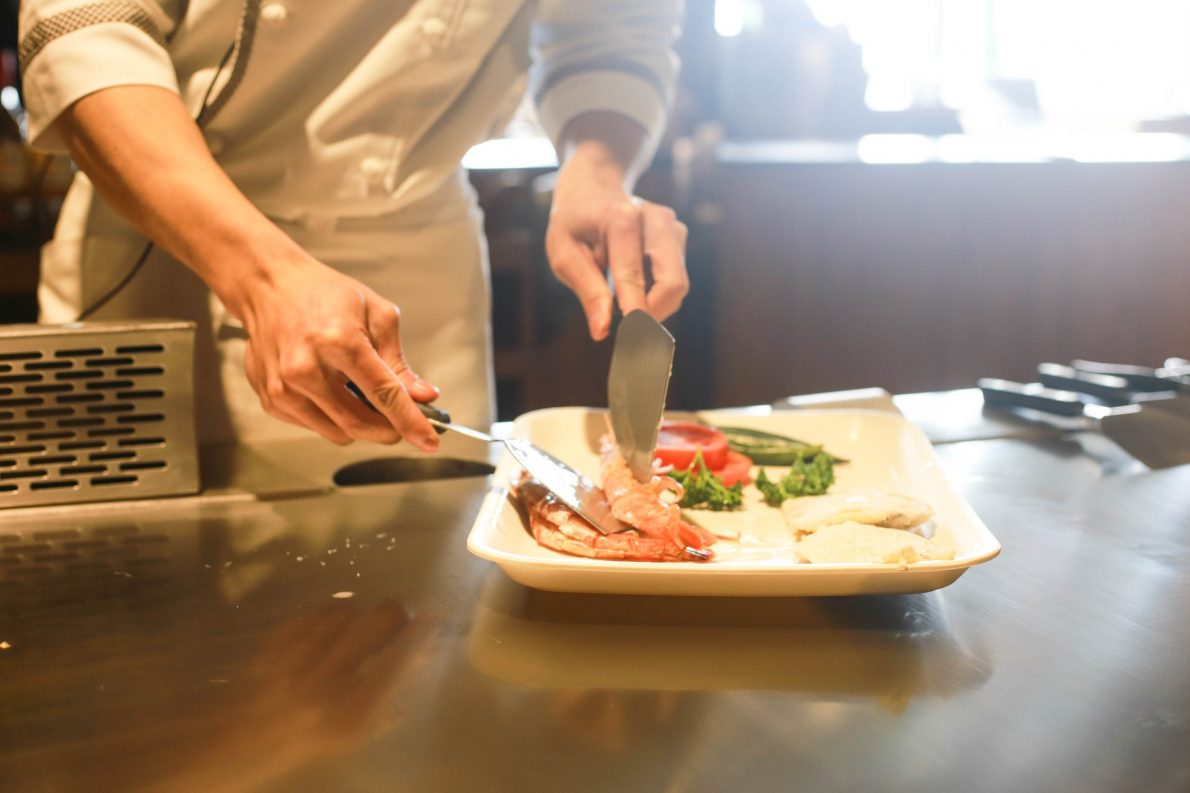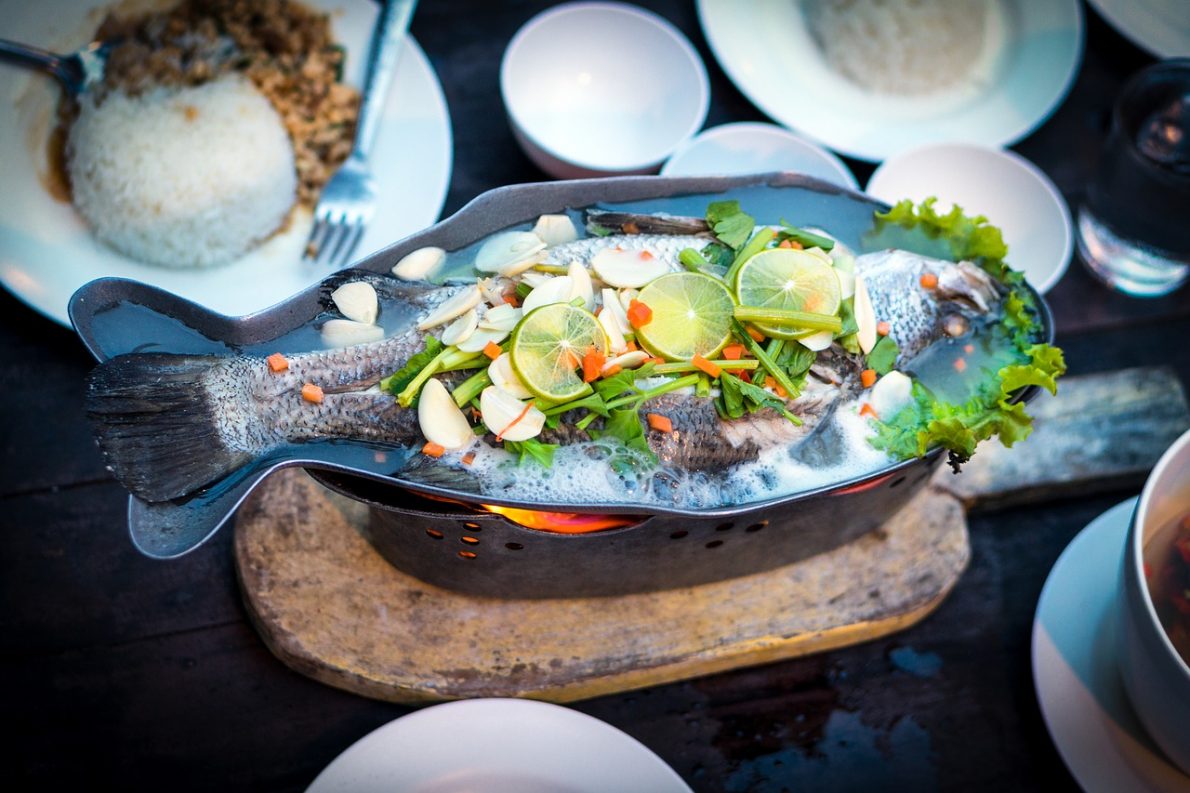
In the following post, Charlotte Miller, dietitian and chef at ‘we feed you’, shares her unique perspective on dining out with dietary intolerances. Charlotte looks at why it can sometimes be so challenging (from the perspective of both the diner and the staff), and shares some practical tips to help making dining out with food intolerance a more positive experience.
‘Substitutions and modifications are not possible’. Have you seen this on a menu?
The way restaurants choose to handle serious allergies and food intolerances can range from highly accommodating, to outright refusal of service. Disappointingly, there are a lack of common guidelines and training for restaurant staff across the industry, which can be frustrating for everyone involved.
The Experience
In my 20 year career as a chef and dietitian (and avid diner-out), I have seen this same situation play out many times:
The customer experience:
I went to a restaurant that my friend chose for her birthday dinner but the menu didn’t have anything that was okay for me to eat. I told the waitress I can’t eat onion, garlic, honey or lactose and tried to find out what I could have. The waitress didn’t seem to know much – her answers were quite vague and she didn’t seem to take me seriously. I don’t understand why they hire people who have no idea about food. I asked if the chef could just make me something and the waitress left to check. I felt embarrassed about making a fuss and holding my friends up. The waitress came back and said that was okay but she seemed pretty annoyed. I think the meal I got was okay for my intolerances but it wasn’t great and I won’t eat there again.
The waitress experience:
A large group came in for a birthday dinner. One lady told me she couldn’t eat a whole list of things and asked what she could have. I’ve only been working here part-time for a few weeks and it’s been so busy that I haven’t even tried half the dishes. I don’t really cook myself but eat most things so I don’t know too much about food intolerances. I felt really embarrassed when she was asking questions I couldn’t answer and the whole table was listening. When I went to ask the chef if he could make a special meal he sounded frustrated because it was so busy, but he did agree to do it. It was the third time that night I’d had to ask the chef to do this and I hope I’m not in his bad books now.

The chef experience:
It was a Saturday night and we had two full seatings including a number of large tables. Lunch had also been busy and I had been at work since 7am without a break. One of the apprentices had just cut their hand badly and was off trying to bandage it up so we were running behind and the docket machine was spitting out orders like crazy. One of the waitresses asked if I could put together a special meal for a customer who couldn’t eat a whole list of things. This was the fourth time that night. Suddenly I had to get creative and whip up a special dish while I had 75 other customers waiting for their food. I managed to scramble something together but I wasn’t really happy with it, and I’m not sure the customer would have enjoyed it much. It’s a shame as I could have made them something really good if I’d had more time. It also meant we were slow with three other big tables who all complained that their meals took too long to come out. The restaurant manager is now pretty annoyed with the whole kitchen team tonight.
The Challenge
Clearly, no one wins in the above situation. So, why is it so hard to get this right? After all, having a food intolerance should not be a barrier to dining out and enjoying great food!
Let’s examine three of the most common questions I have heard customers ask, often in frustration:
- Why can’t they just deal with my allergy?
While many chefs may be unfamiliar with food intolerances, they certainly understand the implications of a serious allergy and that allergens can show up in a range of ingredients.
When a customer comes in and mentions a serious nut allergy, unless the kitchen has been already set up as nut free, the chefs will be extremely nervous. Nuts are in the kitchen, and who knows what they have touched that might end up on your plate. They may be inclined to cover themselves by simply saying ‘no – we can’t serve you.’ They aren’t being mean – they are just panicking that you might you actually die from something they put in front of you. A chef under the pressure of service may not be able to think clearly about whether your food may be contaminated in their kitchen.
Some parts of your meal are prepared well in advance of it arriving on your table. Sauce bases, stocks, doughs, condiments, vegetables, marinades are all prepared in advance so they are ready to use at service time. This means they can’t be changed. While standard recipes are mostly used, chefs can sometime get creative so when a customer presents with an allergy and asks ‘what is in that’ it can create a slight panic, especially if the maker of that particular prepped item is not in the kitchen to answer questions.

- Why can’t I just change a few things in a dish?
Service time in a busy kitchen is a fragile ecosystem – one tiny change (like an incorrect order or a customer sending something back) and the whole thing can go tumbling down, usually leaving some poor waiter copping the wrath of the stressed out chef!
Often there are limited chefs, working in a small space with too many meals to cook. While kitchens may be sympathetic to diners with allergies, it just may not be possible to make simple modifications. It’s the reason why some restaurants have introduced no-modification policies. While these restaurants may sound like they are just saying ‘no – we can’t do that here’ what they are really saying is ‘we don’t have the capacity to accommodate you because of the way we are set up.’ They might be set up to accommodate vegetarians and vegans quite successfully but this means they may struggle to accommodate garlic and onion free. Other restaurants might easily be able to accommodate dairy free and shellfish free food but may refuse to guarantee they are nut or egg free.
- Why don’t restaurant staff know how to handle this better?
In an ideal world, restaurants would have the time and money to train their staff in allergens and intolerances but it’s easier said than done. Kitchens and restaurants run on tight budgets. Like really tight. This means no money to spend on training and no money to pay for the time this would take. Chefs are not nutritionists, wait staff are often students working part time to get through their study, and hospitality staff can turn over quickly making restaurants less willing to invest any time or money into extra training. In the USA there are steps being taken to make staff training available and ultimately compulsory but that is not yet happening in Australia.
Most chefs and restaurant managers would agree the lack of training around intolerances and allergens is a problem but the solution is somewhat elusive and many chefs unfortunately rely on googling the questions that come in!
The Answer
…. is unfortunately not straightforward. But there is good news! Plenty of restaurants and chefs are starting to realise that there are a significant number of potential customers who have diverse dietary needs and intolerances, and they are working hard to accommodate these people better.
Here are four practical tips to have a far more positive experience when eating out with a dietary intolerance:

- Take the time to research which café’s and restaurants are doing this well. Facebook groups for people with dietary intolerances are a great source of peer referral and if you google “allergy friendly restaurants Melbourne” there are literally dozens of blog posts and articles to have a look at. Of course don’t forget to share your own experiences as well!
- Call the restaurant in advance and share your food restrictions. They can put you in touch with the right person to answer your questions and can let you know which dishes will be suitable for you. Don’t worry about this being annoying or time consuming for them. It is much better to do this on a Tuesday afternoon than it is on a Saturday night. If the meal is not planned, let them know as soon as you walk in. It will be appreciated by the staff.
- Try and have a look at the menu in advance and see if the restaurant is suitable for you. Thai restaurants can be dangerous places for nut allergies and pasta restaurants aren’t great for coeliacs. It might mean choosing another venue – if you can.
- Make sure you clearly communicate what you can and cannot eat. It makes it easier for restaurant staff to cater for you. If you neglect to tell restaurant staff about an allergy or intolerance don’t be surprised to find out later that there was a contamination in your meal.
Feeling empowered and enlightened, and ready to make the most of your next dining experience? We hope so!
* * *
Charlotte Miller is a chef, dietitian and co-founder of ‘we feed you’ – a Melbourne team of passionate nutrition and food professionals who make and deliver remarkable and nutritious ready-made meals. All meals are gluten free, onion and garlic free and they cater for a wide range of dietary needs and intolerances including an extensive range of Low FODMAP meals. You can discover more at www.wefeedyou.com.au and contact Charlotte at dietitian@wefeedyou.com.au




